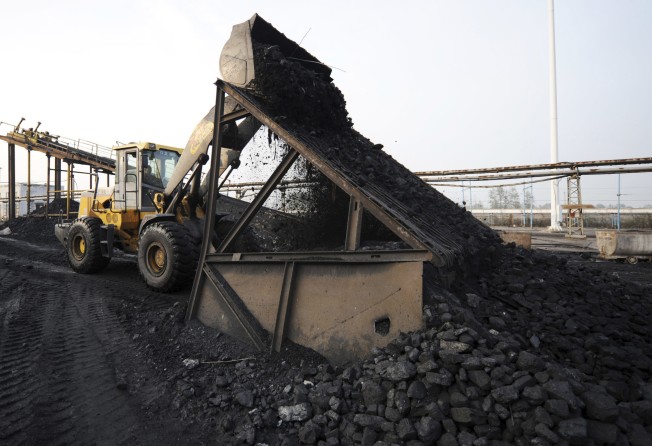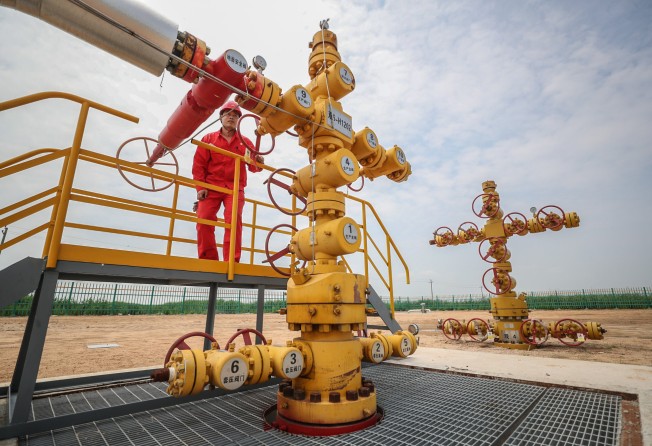
China’s wealthiest regions invest more in fossil fuel despite carbon neutrality goal
- Guangdong, Zhejiang and Shanghai have continued to increase the amount of money spent on fossil fuel projects, according to Greenpeace
- While China’s economic hubs are heeding Beijing’s order to turn away from coal, experts found that these regions are shifting to fossil gas instead

Some of China’s most affluent regions have doubled down on fossil fuel, despite the country’s pledge in 2020 to become carbon neutral by 2060, according to the latest analysis by environmental group Greenpeace East Asia.
While several Chinese cities and provinces with the nation’s highest GDP – including Guangdong, Zhejiang and Shanghai – have poured investment into developing low-carbon technology and renewable energy, they have also continued to increase the amount of money spent on fossil fuel projects, especially in gas, according to the research.
The southern province of Guangdong, China’s largest regional economy, invested 385.1 billion yuan (US$56.5 billion) in fossil fuel projects so far this year, up 21.8 per cent since 2020, according to Greenpeace.
The eastern province of Zhejiang, China’s fourth-largest regional economy, and the neighbouring coastal metropolis of Shanghai, the tenth-largest regional economy, have also increased their investment in fossil fuel projects this year at the annual rates of 5 per cent and 19.9 per cent to 92.3 billion yuan and 31.5 billion yuan, respectively.

“The increasing investment in fossil gas, despite China’s overall decrease in coal investment and the country’s net zero strategies, indicates that top provinces should lead the way in the national energy transition,” said Qiu Chengcheng, Greenpeace East Asia’s Beijing-based climate and energy campaigner.
“But at this point, it seems that low-carbon policies are not encouraging a full swing energy transition in Guangdong.”
Chinese President Xi Jinping announced in April that the country would in 2026 start phasing out the consumption of coal, which currently accounts for over 60 per cent of China’s power generation. The plan is part of the country’s goal to have renewable energy account for 80 per cent of national energy production by 2060, when the country is supposed to achieve carbon neutrality.
While China’s economic hubs are heeding Beijing’s order to turn away from coal, Greenpeace found that these regions are shifting to fossil gas instead.
Guangdong, for instance, announced last year that it would ban the construction and expansion of coal-fired power plants and company-owned captive power stations in core areas of the Pearl River Delta. However, Greenpeace found that the province has also invested in 68 fossil gas power projects and 25 fossil gas infrastructure projects so far this year.

Such moves may be driven by the need to ensure energy security amid the phasing out of coal, as well as the government’s desire to look for new opportunities in industrial growth, energy experts said.
“In the power sector, there is a perceived need for more backup power that can be used during demand spikes, such as those occurring now due to heat waves and increased use of air conditioning,” said Lauri Myllyvirta, an analyst at the Centre for Research on Energy and Clean Air, a Finland-registered research group.
Record-breaking heat waves across China this summer have led to a surge in power demand for cooling, which has in turn driven provinces such as Guangdong and Sichuan to ration power supply to the industrial sector in favour of household use.
Because renewable power supplies are insufficient to meet power demand during peak season, gas has become a favourable alternative due to its flexibility and cost-effectiveness, according to Lucas Zhang Liutong, director of Hong Kong-based consultancy WaterRock Energy Economics.
Local governments in provinces such as Guangdong and Zhejiang are also eying the “green petrochemical” industry as one of their pillars for industry growth, according to Greenpeace. “These projects aimed at short-term growth can add more pressure to carbon peaking and eventual carbon neutralisation by 2060,” said Qiu.

China is currently the world’s largest natural gas importer, and its greening effort is expected to sustain long-term demand for gas as a transitional fuel to meet consumption needs, Moody’s Investors Services said on Friday.
Energy experts are urging China’s central government and local authorities to enhance their determination to tackle climate change and accelerate energy transition to reduce fossil fuel dependence.
“Increasing the use of gas makes it seem like progress is being made on this front,” said Myllyvirta. “However, it’s a dead end, as gas cannot be made pollution- or carbon-free.”